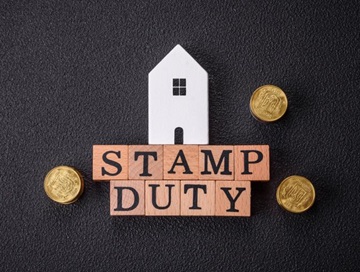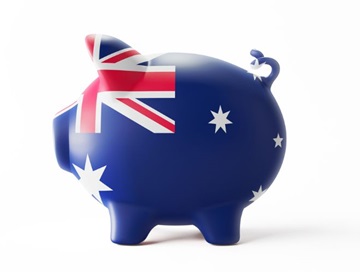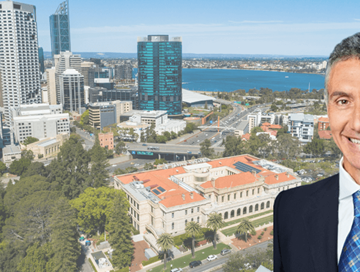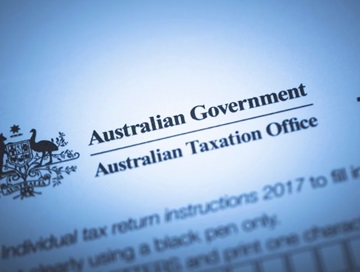Housing affordability declines slightly in WA: REIA
21 September 2023"In WA the proportion of family income required to meet loan repayments rose 0.4 percentage points to 35 per cent over the quarter."

WA retained its position as Australia’s most affordable state for home buyers in the June 2023 quarter, but was beaten to the overall title by the two territories, according to the latest REIA Housing Affordability Report.
In WA the proportion of family income required to meet loan repayments rose 0.4 percentage points to 35 per cent over the quarter, increasing 6.8 percentage points over the year. This is based on a median weekly family income of $2,504 and an average monthly loan repayment of $3,801.
The Northern Territory and the Australian Capital Territory were the only markets more affordable at 34.4 per cent and 34.8 per cent respectively.
With Perth’s median house price rising a moderate 5.5 per cent over the year to June 2023 and the median unit price decreasing 2.9 per cent, REIWA CEO Cath Hart said the decline in affordability was more a reflection of the interest rate increases over the period than any increase in prices.
“Average mortgage payments have increased about 48 per cent since rates started rising. This makes a significant difference to people’s budgets and borrowing power,” she said.
“And while this is a challenge, WA’s higher than average incomes and lower than average mortgages mean the market has been able to adjust.
“Buyers, however, are seeking value and what we have seen over the year to June 2023 is strong interest in the more affordable suburbs. In our financial year review the top 10 fastest selling suburbs were well below the Perth median house price.
“It was a big change from last year’s Top 10, where all the suburbs were over the Perth median house price at that time - the rise in interest rates has clearly played a role in this trend.”
On a national level, home owners were also challenged by rising interest rates with affordability declining in all states except Victoria. The proportion of family income required to service loan repayments was 45.9 per cent, an increase of 2.0 per cent over the quarter and 19.2 per cent in the 12 months to June.
This was the lowest affordability on record since the Global Financial Crisis (GFC) era of 2008.
Housing affordability was at its lowest in New South Wales, where 56 per cent of family income was required to meet loan repayments. Despite the marginal improvement in affordability, Victoria was the second least affordable state for home buyers at 45.6 per cent.
Table 1: Proportion of family income needed to meet loan repayments
| Jun Qtr 2023 | Mar Qtr 2023 | Jun Qtr 2022 | |
| NSW | 56.0% | 55.1% | 47.7% |
| VIC | 46.5% | 46.6% | 39.8% |
| QLD | 42.4% | 41.3% | 34.9% |
| SA | 42.1% | 41.1% | 32.5% |
| WA | 35.0% | 34.6% | 28.2% |
| TAS | 43.5% | 42.8% | 34.3% |
| NT | 34.4% | 32.7% | 26.1% |
| ACT | 34.8% | 34.7% | 28.2% |
| AUS | 45.9% | 45.0% | 38.5% |
Credit: Real Estate Institute of Australia (REIA)
Loan activity
The average loan in WA was $471,274 in the June quarter. This was a decrease of 1.5 per cent from the March quarter and a decline of 0.4 per cent annually. WA's average loan size was 23.8 per cent lower than the national average of $583,289.
The median weekly family income in WA was higher ($2,504) than the national median ($2,363), while the average monthly loan repayment was lower at $3,801 compared to the national average of $4,705.
Despite the decrease in housing affordability, the number of loans increased 9.7 per cent to 10,085 in the June quarter, however this was 13.5 per cent lower than the same time last year.
WA was the most affordable of all states and territories for first home buyers, recording the lowest average loan size of $401,683. This rose 0.5 per cent over the quarter and 3.6 per cent annually.
The number loans to first home buyers in WA rose 7.9 per cent to 3,565 over the three months to June, making up 35.3 per cent of the state’s owner occupier market. However, this was a decrease of 16.6 per cent over the year.
Rental affordability
Rental affordability declined in WA over the quarter and year.
The proportion of family income required to meet median rent payments increased 1.1 percentage points to 22 per cent in the three months to June, an increase of 2.2 percentage points over the year.
WA recorded the largest quarterly decrease in affordability nationwide, while two states and both territories saw affordability improve slightly.
The two most affordable states were again the ACT (19.7 per cent) and Victoria (20.1 per cent).
Ms Hart said WA’s rental market remains challenging and more increases are likely.
“WA recorded the strongest population growth rate in in the year to June; this is having a strong impact on the rental market,” she said.
“While members are reporting a lot of activity from Eastern States investors and builders are reporting increasing completions, supply can’t keep up with demand.
“Unfortunately, the green shoots we saw towards the end of the financial year didn’t bear fruit and under current conditions we expect the vacancy rate to tighten towards the end of the year.
“This will maintain pressure on rent prices.”
Table 2: Proportion of family income needed to meet rent repayments
| Jun Qtr 2023 | Mar Qtr 2023 | Jun Qtr 2022 | |
| NSW | 27.0% | 26.2% | 25.9% |
| VIC | 20.1% | 20.0% | 19.3% |
| QLD | 21.5% | 21.4% | 22.7% |
| SA | 23.5% | 23.9% | 22.8% |
| WA | 22.0% | 20.9% | 19.8% |
| TAS | 27.3% | 29.0% | 29.6% |
| NT | 25.5% | 25.7% | 25.1% |
| ACT | 19.7% | 20.9% | 21.9% |
| AUS | 23.4% | 23.0% | 22.8% |
Credit: Real Estate Institute of Australia (REIA)




.tmb-rcarousel.png?sfvrsn=3619a769_1)

.tmb-rcarousel.png?sfvrsn=8808266b_1)


